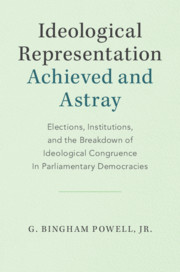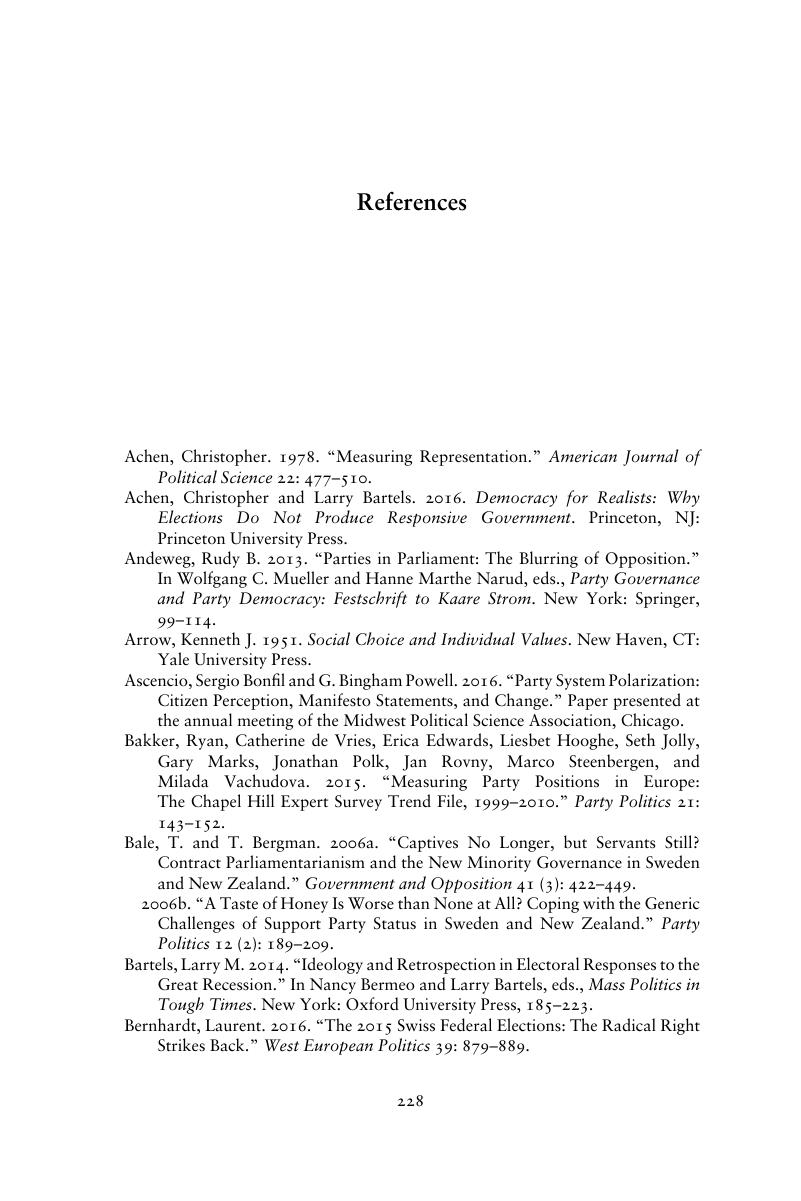 Ideological Representation: Achieved and Astray
Ideological Representation: Achieved and Astray Book contents
- Ideological Representation: Achieved and Astray
- Cambridge Studies in Comparative Politics
- Ideological Representation: Achieved and Astray
- Copyright page
- Contents
- Figures
- Tables
- Acknowledgments
- 1 Elections and Ideological Congruence in Parliamentary Democracies
- 2 The (Rocky) Paths to Government Congruence
- 3 Party Systems as Contexts
- 4 Going Astray at Stage I
- 5 Going Astray at Stage II
- 6 Going Astray at Stage III
- 7 A Special Analysis Problem at Stage III
- 8 The Costs of Ideological Congruence
- 9 Representation in Parliamentary Democracies
- References
- Appendix: Replication and Expansion
- Index
- Other Books in the Series (continued from page ii)
- References
References
Published online by Cambridge University Press: 06 May 2019
- Ideological Representation: Achieved and Astray
- Cambridge Studies in Comparative Politics
- Ideological Representation: Achieved and Astray
- Copyright page
- Contents
- Figures
- Tables
- Acknowledgments
- 1 Elections and Ideological Congruence in Parliamentary Democracies
- 2 The (Rocky) Paths to Government Congruence
- 3 Party Systems as Contexts
- 4 Going Astray at Stage I
- 5 Going Astray at Stage II
- 6 Going Astray at Stage III
- 7 A Special Analysis Problem at Stage III
- 8 The Costs of Ideological Congruence
- 9 Representation in Parliamentary Democracies
- References
- Appendix: Replication and Expansion
- Index
- Other Books in the Series (continued from page ii)
- References
Summary

- Type
- Chapter
- Information
- Ideological Representation: Achieved and AstrayElections, Institutions, and the Breakdown of Ideological Congruence in Parliamentary Democracies, pp. 228 - 236Publisher: Cambridge University PressPrint publication year: 2019


